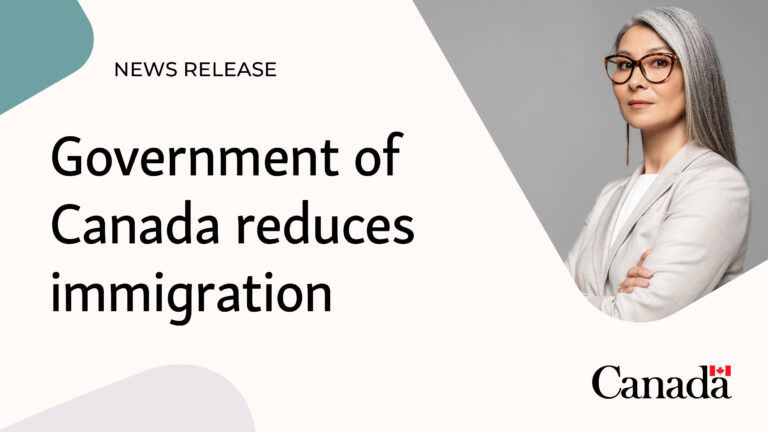October 24, 2024—Ottawa—Today, Mark Miller, Minister of Immigration, Refugees and Citizenship, announced the 2025-2027 Immigration Levels Plan. This is a plan to halt population growth in the short term to achieve well-managed sustainable growth. In the long run. For the first time, this level plan includes controls not only for permanent residents but also for temporary residents, especially international students and foreign workers.
Immigration is essential to our nation’s economic success and growth. As Canada reopened its economy after the pandemic, business needs outstripped the supply of workers to support the recovery. We have taken decisive steps to bring the world’s best talent to study in Canada, work in Canada, and quickly integrate them into our economy. This meant an accelerated economic recovery. This also meant that robust immigration helped prevent recession while contributing to Canada’s workforce.
In response to our nation’s evolving needs, this Transition Level Plan will reduce pressure on housing, infrastructure, and social services, allowing us to increase long-term economic and social prosperity through immigration. This unprecedented plan provides a comprehensive approach to welcoming newcomers that maintains the integrity of the immigration program and sets newcomers up for success. Canadians also expect a well-managed immigration system from the Canadian government.
The 2025-2027 Immigration Levels Plan projects a marginal population decline of 0.2% in both 2025 and 2026, with a return to 0.8% population growth in 2027. These projections explain today’s announcement to lower targets across multiple migration streams. There is also an anticipated exodus of temporary residents over the next two years due to the 5% target, natural population decline, and other factors.
In this year’s Level Plan, we listened to Canadians. We are reducing our permanent resident goals. Here’s how it compares to last year’s plan:
Reduce the number of permanent residents from 500,000 to 395,000 in 2025 Reduce the number of permanent residents from 500,000 to 380,000 in 2026 Set a goal of 365,000 permanent residents in 2027
The Levels plan also supports efforts to reduce the number of temporary residents to 5% of Canada’s population by the end of 2026. Canada’s temporary resident population will decline significantly over the next few years, given the temporary resident reduction measures announced in September and last year. Compared to new arrivals, Canadians are more likely to become permanent residents or leave Canada.
Specifically, compared to the previous year, Canada’s temporary population will decrease by:
Slight increase of 445,901 people in 2025, 445,662 people in 2026, and 17,439 people in 2027
These reductions are the result of a series of changes over the past year, including caps on international students and stricter eligibility requirements for temporary foreign workers, which have reduced the quantity and improved the integrity and quality of our temporary residence programs. This was done to strengthen it. These changes are designed with long-term economic goals in mind to ensure we continue to attract the best talent.
These changes encourage states, territories, and stakeholders to align their capacities and ensure that populations grow at a sustainable pace, while encouraging institutions to play a better welcoming role for newcomers. will help you.
Other measures in the 2025-2027 Immigration Levels Plan include:
Transition more temporary residents who are already in Canada as students or workers to permanent residents
Representing more than 40% of all permanent residents in 2025, these residents are skilled, educated, and integrated into Canadian society. They will continue to support the workforce and economy without placing additional demands on social services where housing and employment are already established. Focus on long-term economic growth and key labor market sectors such as health and trade
Economy class permanent resident enrollment is expected to reach 61.7% of total enrollment by 2027. Strengthen Francophone communities outside Quebec and support their economic prosperity.
Francophone immigrants will account for 8.5% in 2025, 9.5% in 2026, and 10% in 2027 of the overall permanent resident admission target
Through this plan, we will leverage existing programs to ensure that everyone, including newcomers, has access to the good-paying jobs, affordable housing, and social services they need to thrive in this beautiful country. I’m doing it.


